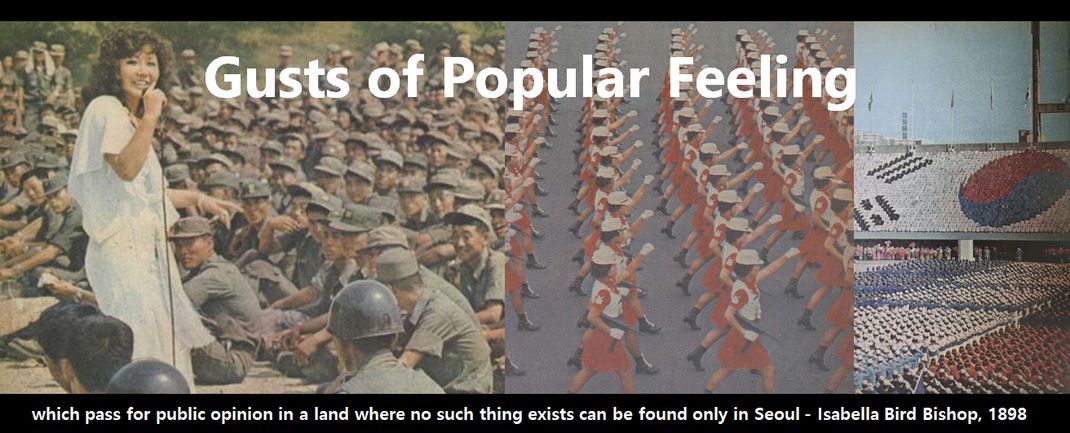Among the 335 primary school students who participated in the Assault Prevention workshop in September-December last year and asked for professional consultation, 41 or 12.2 percent had experienced intense violence at school, said officials. Thirty five cases involved bullying and six sexual assaults.It's hard not to read that and remember the Daegu Elementary gang-rape scandal from 2008 (which was never fully investigated), or some of the stories related here. A grade six elementary school student told me last year that she wasn't looking forward to the next day because she and nine of her friends had to meet a group of middle school girls after school and give one of them 40,000 won in total, or 4,000 won each, because it was one of the bullies' birthday. In another story, a girl in either grade six or middle school grade one was out with friends at a Pizza restaurant in Myeongdong and they were confronted by older middle school girls in the bathroom who took their money - not the way my student planned to spend her birthday. Also, a friend told me last week his elementary school had a meeting with parents of young children angry about the abuse they were receiving from older students - not the best way to start the school year.
Also, the survey conducted on the 1,609 workshop participants showed that some 30 students or 1.9 percent had experienced sexual abuse, said officials. A large number of violence cases were committed by peers or slightly elder students. "Most involve senior students bullying the juniors," said a ChildFund official.
Many cases of sexual abuse against children tend to be committed by adults acquainted with the child, such as family members or neighbors, said the official. In some cases, the sexual harasser turns out to be a teenager, only slightly older than the victim.
As the article nears its end, it notes that,
Last year's workshop was held amid the scandal of a brutal child rape incident, known as the Cho Doo-soon case, involving an ex-convict raping and disabling an 8-year-old girl.The Joongang Ilbo had an article about the girl's family last week:
The father of an 8-year-old rape victim testified in court on Monday that prosecutors forced him not to copy the records of their investigation into Cho Du-sun, who brutally assaulted the girl known as Na-young in 2008. The family of the girl, who has been identified only through that alias, filed suit against the Korean government seeking 30 million won ($26,400) in compensation for the prosecutors’ actions, and trial began Monday at the Seoul Central District Court.The article notes that Cho Du-sun attacked Na-young on Dec. 11, 2008. It was in late September 2009 that this KBS show which brought the case to public attention, and this was followed by the government lashing out in every direction to try to appease public anger over the lenient punishment her attacker received, including declaring foreign English teachers to be "especially potential child molesters" (among other things), and declaring that immigration would ban all foreign sex criminals from coming (or returning), a policy that came into effect recently, even though the foreign sex-crime rate is five times less than the Korean crime rate and foreigners had nothing to do with the Na-young case.
Two weeks ago justice minister Kim Kwi-nam visited Cheongsong Prison in Gyeongsangnam-do, where Jo Du-sun is being held (video here).

Returning to the violence youth inflict on each other, the first-mentioned article ends,
Also, the nation was shaken last month over the violent graduation ceremonies in some middle schools, where seniors inflicted serious physical violence or sexual harassment, claiming it to be a school tradition.While I'd heard of graduates running amok naked before, it seems it may be a little darker than first imagined, as many of these kids - at least ones in the photos I've come across [some of the ones below may be NSFW], have been forced to strip, had clothes ripped or cut off, and been photographed, such as in Ilsan last month:


Photos from previous years show there to be some pretty disgusting hazing practices included:





The girl in the third photo appears to be covered in ketchup, while the boys in the last photos are being pelted with hundreds of eggs and being urinated on. I was reminded of this article in the Hankyoreh years ago, which ended by saying:
Violence is just violence. This is a truth no one can deny. There are many factors to prevent people from seeing this simple fact. The most insidious of this kind of block is when violence wears the clothing of "custom." This being the case, before blaming individuals, we should crush the oppressive things that have made violence customary.Well, okay, the system is the problem, but overlooking punishing individuals in order to go after the system isn't helpful either. As for systems, looking at the violent discipline inherent in the military system, which influenced the school system (going back to the colonial era), and seeing how the ritualized violence meted out by bullies (in videos associated with this case, just to name one) seems like a twisted parody of the discipline students receive at school, one imagines "the oppressive things that have made violence customary" will not disappear any time soon, and their manifestations - involving individuals - will linger further.















































